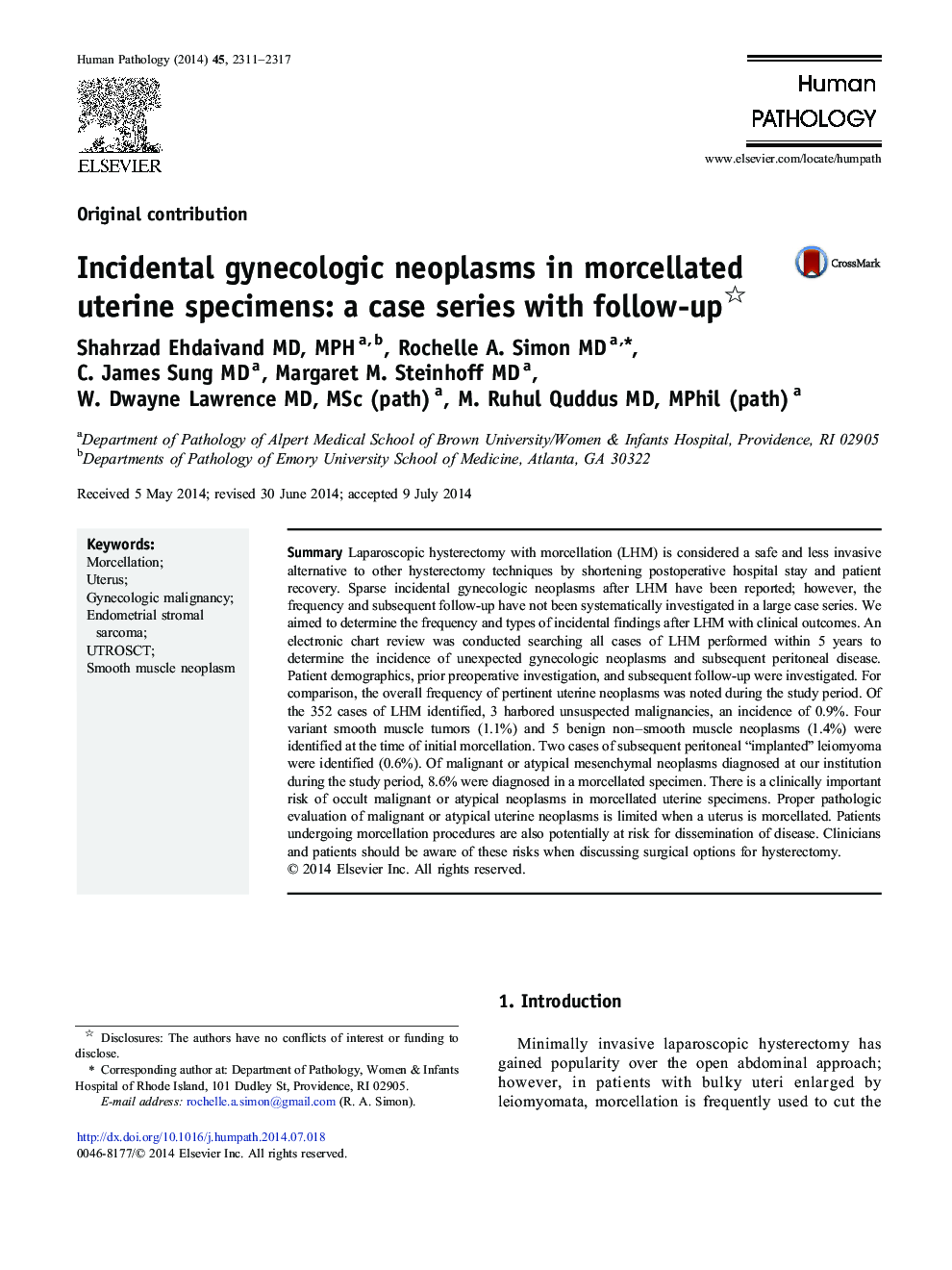| Article ID | Journal | Published Year | Pages | File Type |
|---|---|---|---|---|
| 4133336 | Human Pathology | 2014 | 7 Pages |
SummaryLaparoscopic hysterectomy with morcellation (LHM) is considered a safe and less invasive alternative to other hysterectomy techniques by shortening postoperative hospital stay and patient recovery. Sparse incidental gynecologic neoplasms after LHM have been reported; however, the frequency and subsequent follow-up have not been systematically investigated in a large case series. We aimed to determine the frequency and types of incidental findings after LHM with clinical outcomes. An electronic chart review was conducted searching all cases of LHM performed within 5 years to determine the incidence of unexpected gynecologic neoplasms and subsequent peritoneal disease. Patient demographics, prior preoperative investigation, and subsequent follow-up were investigated. For comparison, the overall frequency of pertinent uterine neoplasms was noted during the study period. Of the 352 cases of LHM identified, 3 harbored unsuspected malignancies, an incidence of 0.9%. Four variant smooth muscle tumors (1.1%) and 5 benign non–smooth muscle neoplasms (1.4%) were identified at the time of initial morcellation. Two cases of subsequent peritoneal “implanted” leiomyoma were identified (0.6%). Of malignant or atypical mesenchymal neoplasms diagnosed at our institution during the study period, 8.6% were diagnosed in a morcellated specimen. There is a clinically important risk of occult malignant or atypical neoplasms in morcellated uterine specimens. Proper pathologic evaluation of malignant or atypical uterine neoplasms is limited when a uterus is morcellated. Patients undergoing morcellation procedures are also potentially at risk for dissemination of disease. Clinicians and patients should be aware of these risks when discussing surgical options for hysterectomy.
